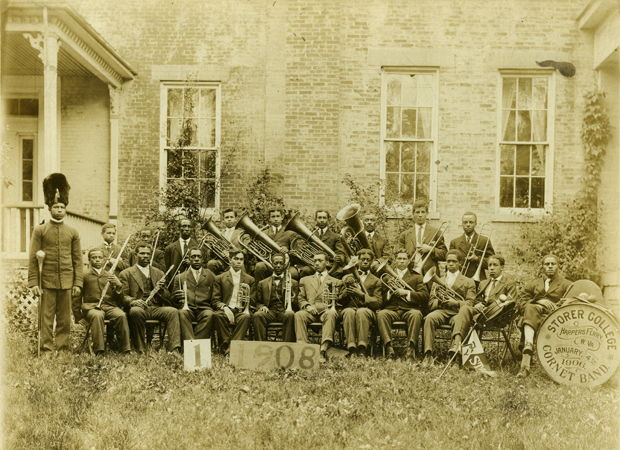Spotlight on the black experience in America

The material in the modest file box ranges from a formal photograph of a well-dressed family to a watercolor of an ornately costumed man named “Prince Bobo.” There’s also a photo of Reverend John G. Thompson, a dwarf described by Time Magazine in 1940 as a “mighty midget.”
The 58 photographs describe the experience of Caribbean and African blacks in the United States from 1847 to the 1960s. They are featured in the Special Collections Spotlight in the Robert D. Farber University Archives.
Although the African, Afro-Caribbean and African-American photographs and ephemera collection has been available for research, it lacked any system of organization. Hallie Appel ’15, an intern in the special collections department, has brought order — and insight — to the collection’s display.
Appel, a history and English major, began working in special collections through the Internship in History program (HIST 92A), which brings one or two students and volunteers every semester to learn about archiving.
It was up to Appel to become familiar with all the photographs and catalogue them by location and chronology. Many of the photographs have been digitized so that researchers can find them online.
Appel’s favorite is a photograph of a cornet band. At first glance, the picture shows two rows of musicians staring at the camera somewhat stiffly.
“But you have this one guy in the middle with a cat nestled in his instrument,” Appel points out. “And there’s the fact that it’s a black college in Harpers Ferry, West Virginia. At the beginning of the 20th century, black people did not usually go to college but these African American men were attending college in a town where 50 years earlier there had been a slave raid.”
For more detailed information on the photographs, visit the Brandeis Special Collections Spotlight. In addition to writing the Spotlight, Appel also created a finding aid.
Categories: Humanities and Social Sciences, Research





